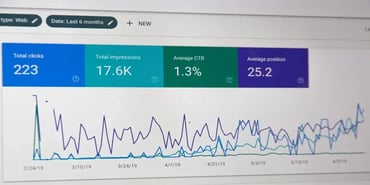Cover Photo by Gerard Siderius on Unsplash
Generative AI products can create new content similar to what humans produce. What does it mean? It can generate text, images, videos, or even music resembling what a person might create.
Generative AI is a specific area of Artificial Intelligence that differs from other types of AI due to its ability to learn how to model and replicate distributions. For those familiar with predictive modeling space, generative models are a class of ML models that can predict the next word or next event but can also be used to generate content. Bayesian networks, Hidden Markov Chains, and LSTMs are great examples of generative models. And what do they have in common? They can learn patterns and create new content that mimics real-world data events.
How does Generative AI work?
To create new content, generative AI models use a process called sampling. This process involves generating a sequence of data points, such as words in a sentence, pixels in an image, or records in a structured dataset, one at a time. Each data point is chosen based on probabilities calculated by the model, which are based on the patterns it learned from the training data.
One of the most popular generative AI models is the Generative Pre-trained Transformer (GPT) architecture used in language models. GPT models are trained on large amounts of text data and can generate coherent and grammatically correct sentences similar to what a human might write.
But other examples go beyond ChatGPT — Generative AI also enables synthetic data generation for tabular or time-series datasets. Similarly to ChatGPT, synthetic data generation requires using a Machine Learning model to create new rows and columns of data while keeping similar statistics, patterns, and behaviors identified without the original set.
Some of the most popular generative models for structure data include Generative Adversarial Networks (GANs), Variational Autoencoders (VAEs), and autoregressive models such as the MADE (Masked Autoencoder for Density Estimation) model.
And the applications of Generative AI go beyond what ChatGPT offers, including, of course, the creation of chatbots that can interact with customers, generate content for social media, create art, and generate tabular data for data analysis and decision-making. However, it is essential to note that generative AI solutions are still ML models that can overfit and be impacted by data quality. As such, it is important to carefully curate and evaluate the training data to ensure that the generative AI models produce representative, ethical, and inclusive content.
In conclusion, generative AI is a powerful technology that has the potential to revolutionize many industries. By understanding how it works, we can unlock its full potential and use it to create a better future.
How will this technology impact humanity?
On the one hand, generative AI has the potential to revolutionize many industries and improve the quality of life for many people. For example, it could be used to create personalized content and experiences, such as customized products or virtual assistants that understand and anticipate our needs. It could also be used to accelerate scientific discovery, such as developing new drugs or understanding complex systems like climate change.
However, there are also concerns that generative AI could negatively affect society. For example, it could be used to create sophisticated fake news or propaganda or be used for malicious purposes such as cyberattacks or surveillance. It could also exacerbate existing social inequalities, such as reinforcing biases in decision-making or exacerbating job displacement.
It is, therefore, important for society to carefully consider the ethical implications of generative AI and ensure that it is developed and used in a way that benefits humanity. This includes providing the technology is transparent, fair, accountable, and subject to rigorous testing and evaluation. Ultimately, the impact of generative AI on humanity will depend on how we choose to develop and use this powerful technology.
What does the future hold for Generative AI?
This technology has already shown great promise in various fields, such as art, entertainment, and data analysis. In the future, we can expect to see even more innovative applications of generative AI, such as personalized content creation, virtual assistants, and even automated scientific discovery.
One potential use case for generative AI is in the field of medicine. With the ability to generate new molecules and simulate their behavior, generative AI could help researchers discover new drugs and treatments for diseases. Similarly, generative AI could create realistic simulations of complex systems, such as weather patterns or ecological systems, to help scientists study and understand them.
Overall, the future of Generative AI is exciting and full of potential!



